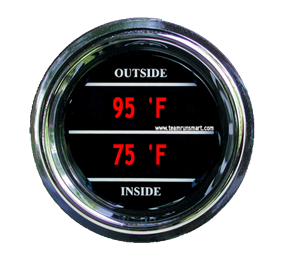 As summer approaches and the hot and humid weather returns, a quick discussion regarding heat induced illness is in order. While the bulk of our job is spent in an air conditioned cab and we probably don’t have a tremendous amount of physical exertion throughout the day, you may find yourself having to do physical labor to unload your trailer on a hot and/or humid day. In this situation you should know the signs and symptoms of heat induced illnesses: heat cramps, heat exhaustion and heat stroke. When the body is unable to cool off by sweating, those three medical conditions can occur.
As summer approaches and the hot and humid weather returns, a quick discussion regarding heat induced illness is in order. While the bulk of our job is spent in an air conditioned cab and we probably don’t have a tremendous amount of physical exertion throughout the day, you may find yourself having to do physical labor to unload your trailer on a hot and/or humid day. In this situation you should know the signs and symptoms of heat induced illnesses: heat cramps, heat exhaustion and heat stroke. When the body is unable to cool off by sweating, those three medical conditions can occur.
Heat induced illness can be caused by any or a combination of the following:
- direct sun
- high temperatures/oven-type heat
- high humidity
- dehydration
- electrolyte imbalance
- exposure to constant moisture
- workload intensity or strain
- physical fitness
- age
- metabolism rate
- medications
- alcohol/drug use
- limited air movement and acclimatization (10-14 days to become acclimated and only 2 days to lose acclimatization)
The first stage of heat induced illness is heat cramps.
- General symptoms of heat cramps: painful spasms in the legs, arms or abdominal muscles, heavy sweating and thirst.
- Causes: Heat cramps typically occur after hard work or exercise and are caused by electrolyte deficiencies that result from extended periods of intense sweating.
- First Aid: Stop all activity and sit in a cool place. Drink plenty of water and electrolyte fluids in a 3:1 ratio (three waters to one electrolyte fluid). Do not return to strenuous activity for a few hours after the cramps have subsided.
The second stage of heat induced illness is heat exhaustion and this is more serious than heat cramps.
- General symptoms of heat exhaustion: headache, rash, cramps, physical exhaustion/weakness, cool, clammy or moist skin, heavy sweating, mood swings or erratic behavior, nausea or vomiting, dizziness or fainting, increased stress on body organs and a core body temperature up to and including 103 degrees Fahrenheit.
- Causes: All of the causes listed above for heat cramps and also dehydration, lack of acclimatization, reduction of blood in circulation, strain on the circulatory system and reduced blood flow to the brain.
- First Aid: Rest in a cool shady place and drink plenty of water plus electrolyte fluid.
The third and final stage of heat induced illness is heat stroke. Heat stroke is considered a true medical emergency and is immediately life threatening. Heat stoke happens when all of the body’s cooling mechanisms have been exhausted so your body can no longer cool itself and your core body temperature ranges from 104 to 110 degrees Fahrenheit. When heat exhaustion is not treated and stopped, heat stroke is very likely to occur.
- General symptoms of heat stroke: extremely rapid pulse, high body temperature, red, hot, dry skin with a lack of perspiration, nausea, dizziness and confusion, a strong and rapid pulse, seizures or convulsions, delirium, loss of consciousness, coma and finally death.
- Causes: All of the causes listed above for heat cramps and heat exhaustion. It is worth noting that heat stroke can occur suddenly if heat exhaustion is not treated and can be fatal.
- First Aid: A person suffering heat stroke needs immediate medical attention and should be taken to a medical facility immediately. Brain damage is very possible. Call 911 immediately and move the person to a cool shaded area. Douse the person continuously with cool water and fan them but take great care not to compromise their airway. While waiting for EMS to arrive the goal is to bring their core body temperature down to the 101 to 102 degree range.
There is a very short phrase used in the fire industry and it applies here as well and that phrase is “Situational Awareness”. Be aware of your situation such as how physically strenuous your work level is, heat, humidity and acclimation to the environment. Pay attention to your body physiology. Your body will tell you what is happening if you are tuned in and listening. Know your physical limitations and do not exceed them.
Take note of the different symptoms in each category listed above; some symptoms are the same while others are very different and should clue you in to what is happening. Always remember your main goal is to provide for your family and part of that is going home safe and healthy, after all it is just freight and the world won’t stop if it doesn’t get unloaded in record time.